Ethics We Can’t Ignore
Published: April 2025
Estimated Read Time: 10–12 minutes
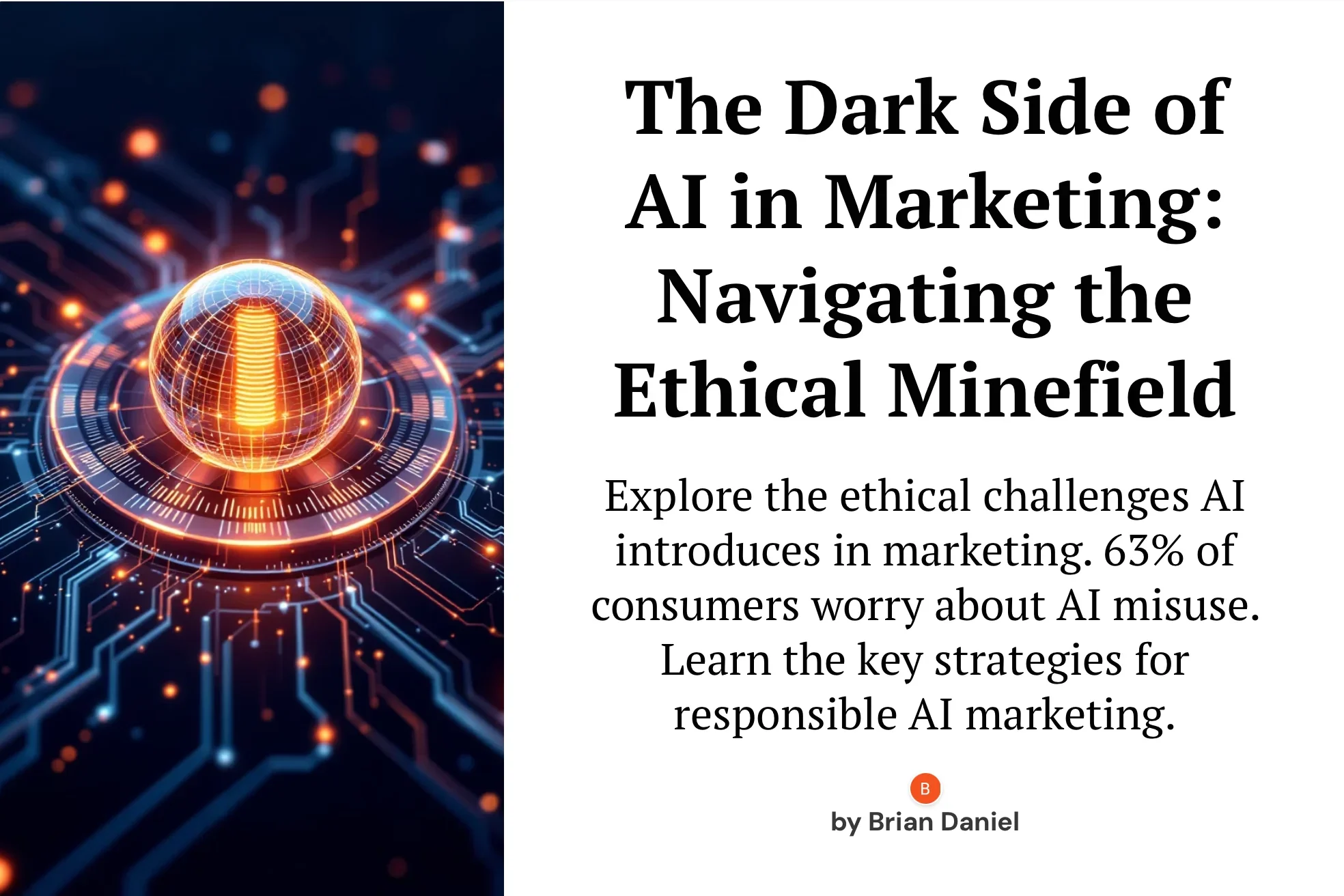
Let’s be real — AI in marketing feels like magic. The way it personalizes experiences, automates entire funnels, and predicts user behavior? Game-changing.
But the truth hiding behind that magic? It’s messy. Complicated. And sometimes… unethical.
This isn’t just a cautionary tale — it’s a call to accountability. Because as marketers, developers, and brand leaders, we don’t just use AI — we teach it how to behave. The ethical compass we embed today becomes the standard tomorrow.
🤖 AI Isn’t Just a Tool — It’s a Mirror
One of the most dangerous myths in tech is that AI is neutral. Spoiler: it’s not. Algorithms don’t exist in a vacuum. They learn from the data we feed them — and if that data’s flawed, the outcome will be too.
“The future of marketing is AI. But the soul of marketing is ethics.”
A Salesforce consumer trust report found that 63% of consumers worry about AI misuse in marketing. And they should. Because the same systems used to serve us relevant ads can also serve bias, misinformation, and digital exploitation.
AI is like a high-speed sports car:
- Data is the gas
- Code is the engine
- Ethics is the brake system
Without brakes, you’re not going fast — you’re crashing.
🔍 Data Privacy: The Invisible Violation
Ever searched for something once and seen it follow you around the internet for days? That’s AI in action — quietly building a profile on you from the shadows.
But here’s the issue: just because data is accessible doesn’t mean it’s ethical to use.
From fingerprinting to third-party pixel tracking, users often have no idea what they’re agreeing to. Why? Because privacy policies are intentionally long, vague, and hidden behind cookie banners no one reads.
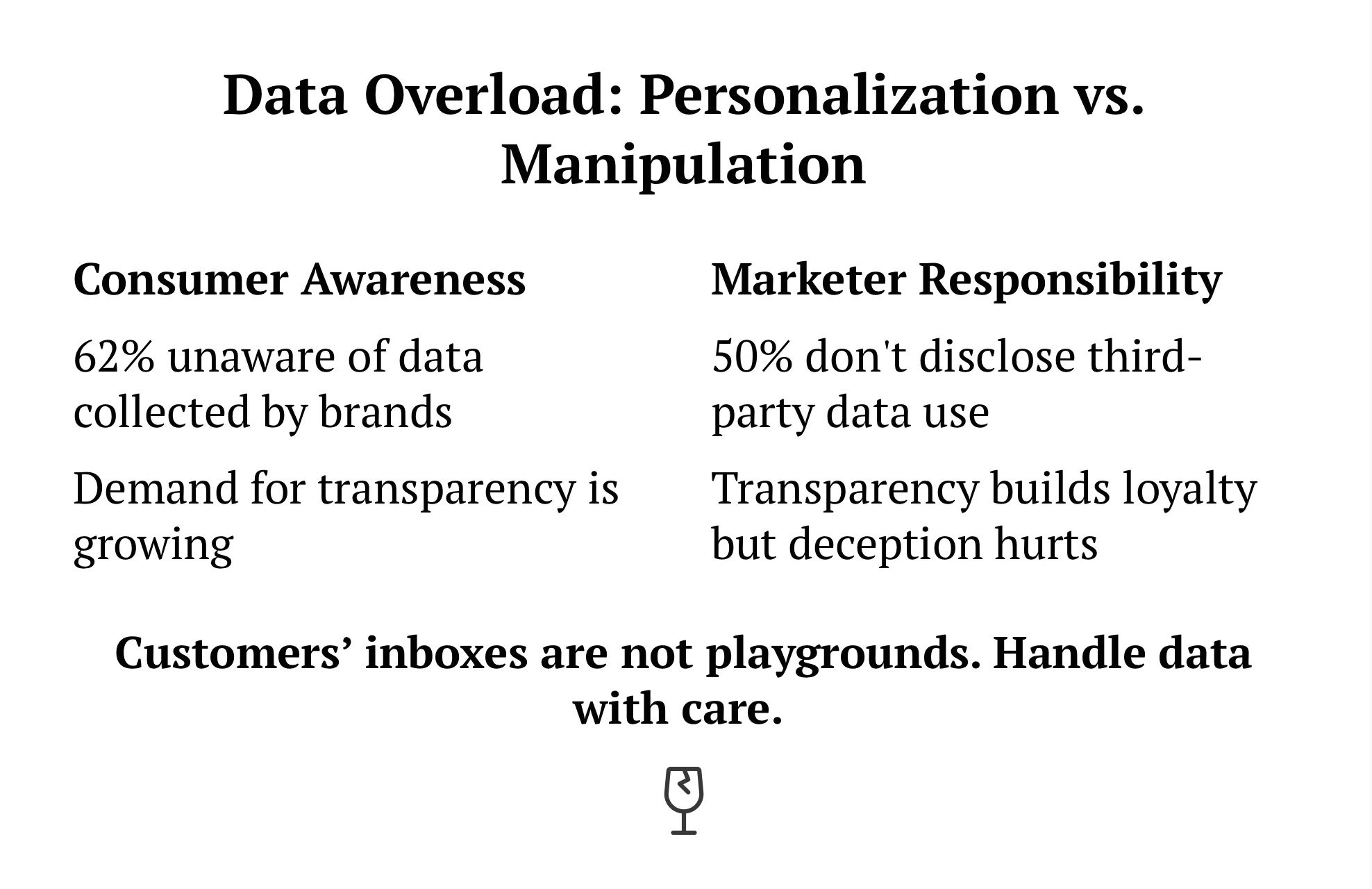
A Cisco Consumer Privacy Survey revealed that 78% of users would walk away from a brand over data misuse.Think about that: nearly 4 out of 5 customers will ghost you — not because your product sucked, but because your ethicsdid.
🔎 The Ethical Data Checklist:
- Is your data collection truly consensual?
- Are users informed in plain language?
- Do you allow full revocation of data access?
If not — you’ve got work to do.
⚠️ Case Study: Clearview AI — Innovation or Invasion?
Alt text: Blurred surveillance footage showing AI facial recognition
Clearview AI made headlines after scraping over 3 billion images from the internet — without permission — to train facial recognition software. No opt-ins. No disclosures. Just full-on digital dragnet.
The backlash was global:
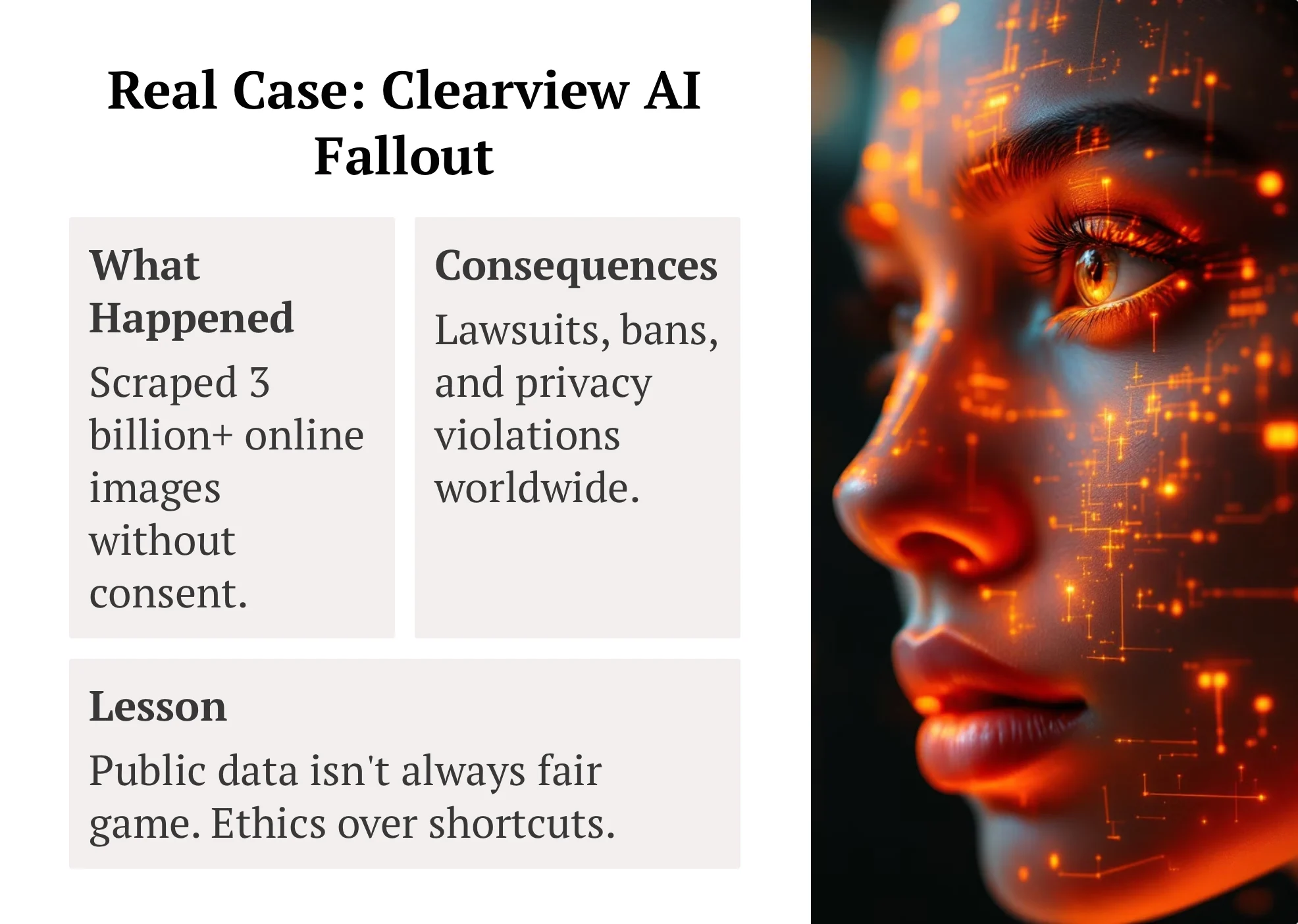
- Lawsuits from civil rights groups
- Bans across Europe and Canada
- Massive trust fallout for brands using the tech
This wasn’t a tech fail. It was an ethical collapse.
Clearview’s story is a warning to every brand dabbling in unregulated data scraping: innovation without permission is exploitation.
🧬 Algorithmic Bias: Racism, Sexism, and Everything in Between
Here’s a hard pill to swallow: AI often reflects society’s worst biases — not its best intentions.
If your training data is biased (and most is), the system will make biased decisions.
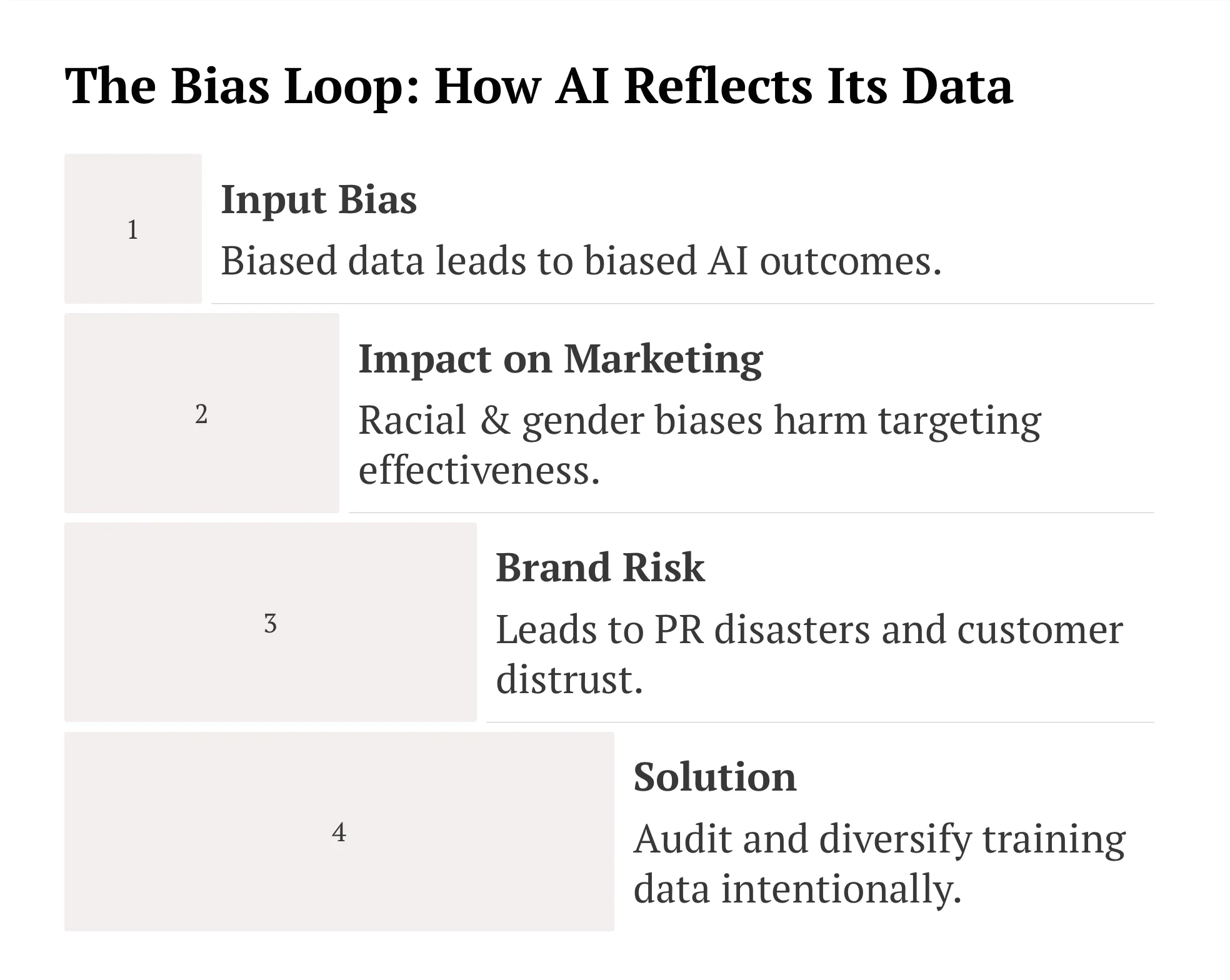
Real-world consequences:
- Women rejected for jobs because of male-skewed data
- Ads for luxury items shown only to certain ethnicities
- AI flagging dialects of English as “non-compliant”
When you use AI without auditing for bias, you’re not solving problems — you’re just scaling discrimination.
And here’s the kicker: most people don’t even know it’s happening.
⚙️ Automation Isn’t an Excuse
When AI messes up, who takes the blame?
If an ad shows up next to hate speech, or a chatbot says something offensive, or a tool targets the wrong demographic, who’s responsible?
You can’t just shrug and say “well, the algorithm decided.”
If it’s your brand, it’s your mess. Period.
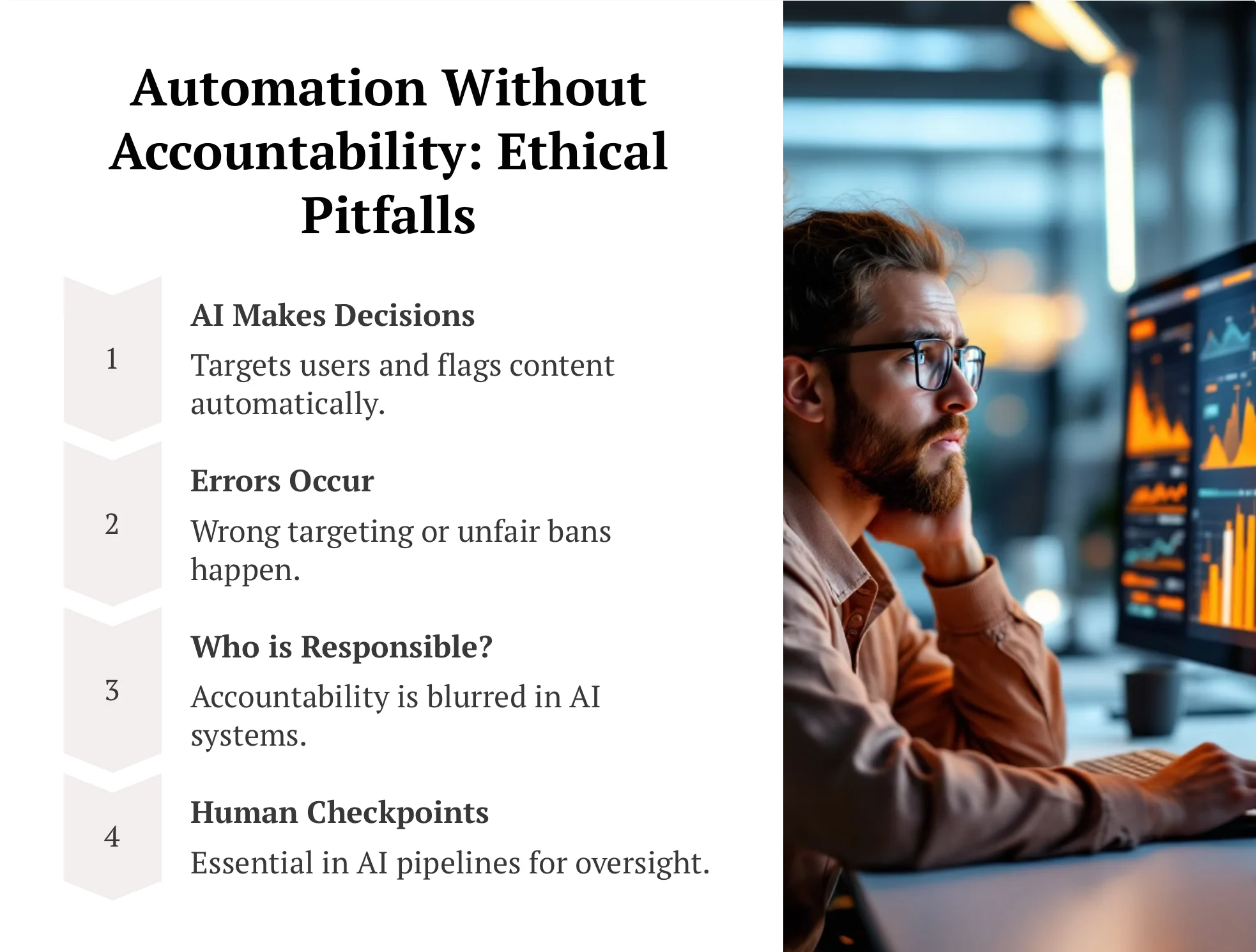
💡 Pro tip: Ethics should be treated like UTM codes something you bake into every system you launch.
Alt text: AI-generated influencer with glowing eyes and product banner
Imagine this: a charismatic influencer with perfect skin, perfect lighting, and the perfect pitch. One problem — they’re not real.
From deepfaked politicians to AI-generated brand reps, digital deception is hitting new highs. Some of it is creative. A lot of it? Dangerous.
Voice clones. CGI hosts. Synthetic avatars pushing products.
And consumers? They’re starting to catch on.
🧟♂️ Deepfakes & The Rise of Synthetic Influence
Authenticity is no longer optional, it’s your currency.
Let’s talk about fake influencers.
- CGI humans promoting products
- Voice-cloned ads featuring celebrities who never endorsed you
- Deepfake tutorials with flawless delivery
It looks real. It sells. But at what cost?
Consumers are smart. They’re starting to notice. And when they feel duped, they disappear.
Authenticity still wins. Every time.
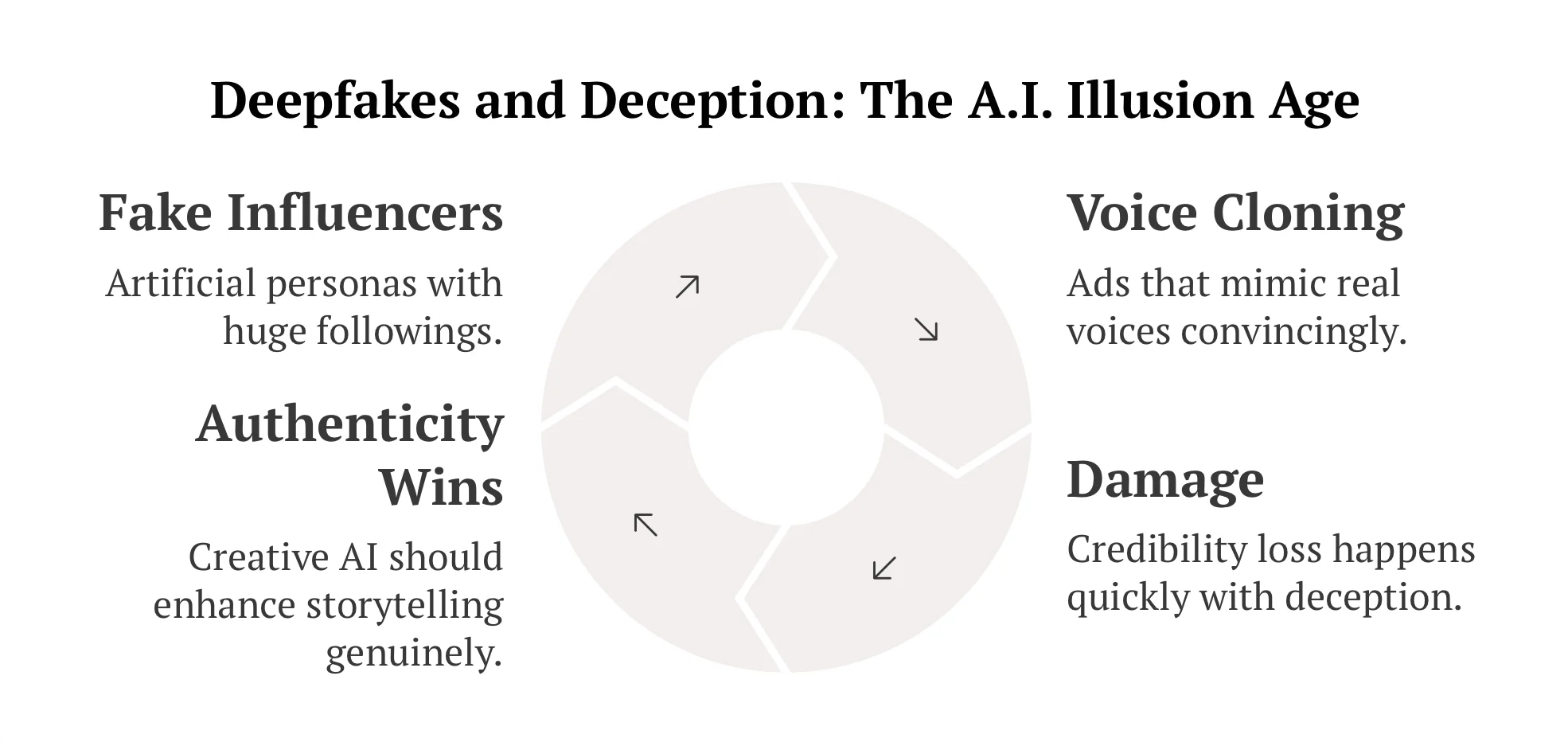
📜 The Consent Illusion
Let’s talk about the fine print. The kind that nobody reads but everybody clicks.
You know the drill:
- 3,000-word privacy policies
- Checkboxes pre-checked
- Data sharing buried on page 6
That’s not consent. That’s legal trickery.
Your users aren’t stupid , they’re tired. Tired of hidden terms. Tired of bait-and-switch signups. And definitely tired of giving away their privacy for a 10% coupon.
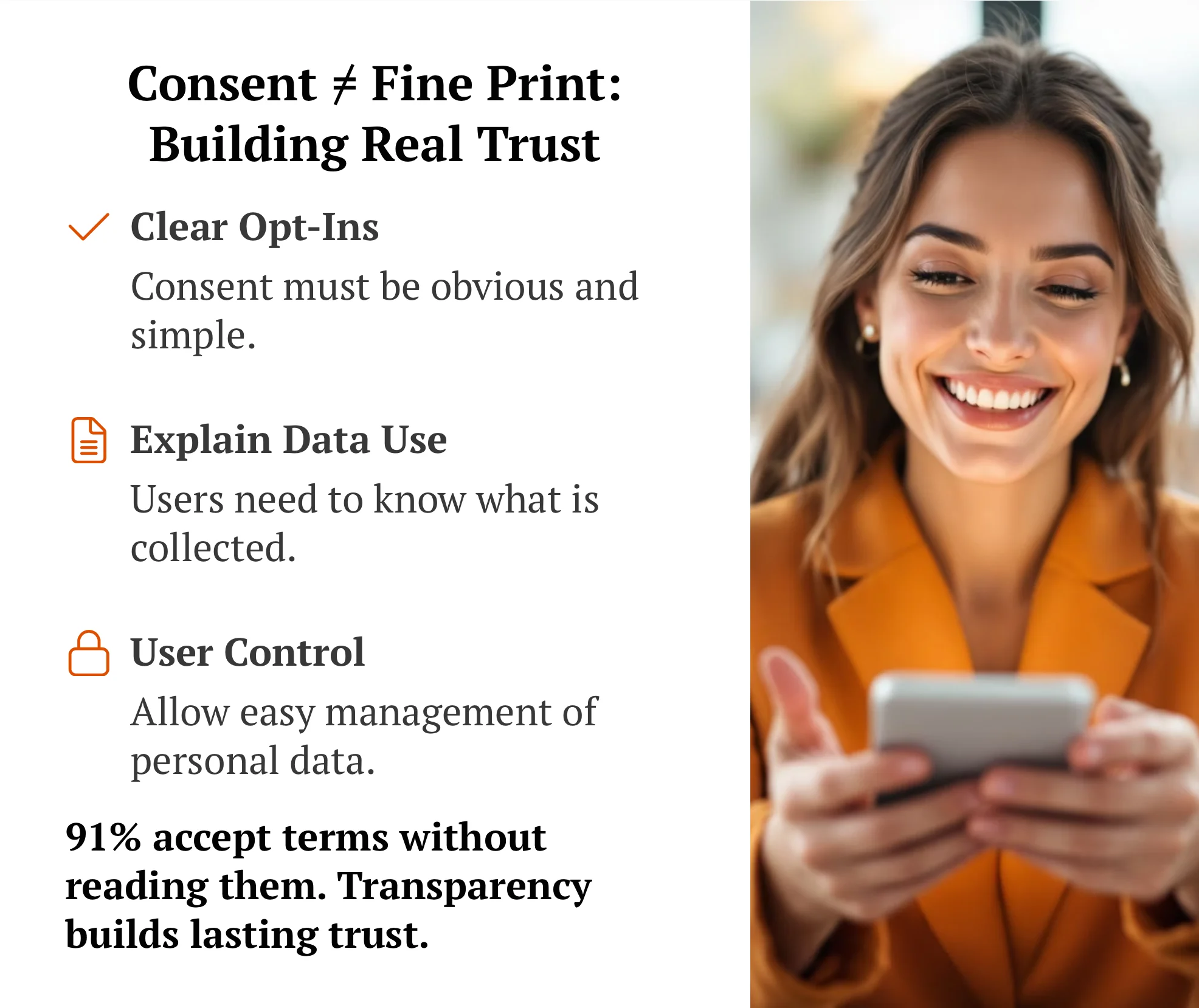
✅ Ethical Consent in Practice:
- Short, clear explanations of data use
- Unbundled opt-ins (no sneaky defaults)
- Easy revocation of consent at any time
Want trust? Give transparency.
💼 Ethical AI: It’s Not Just Good — It’s Profitable
Still think ethics are just a PR move? Think again.
📊 Key Stats:
- 88% of consumers say brand trust determines purchase decisions
- 71% say they’ll never return to a company they feel betrayed by
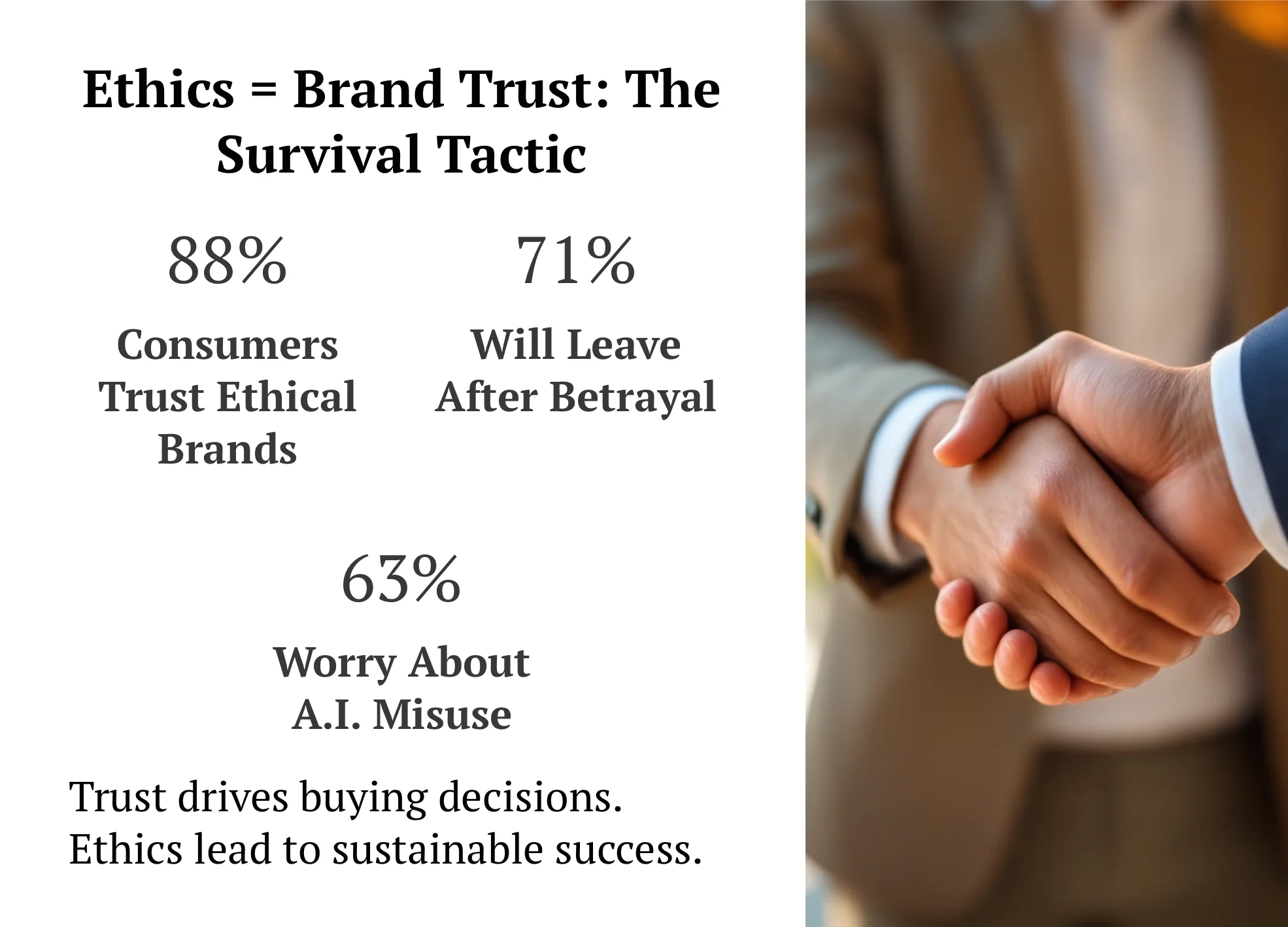
So if you’re still cutting corners with AI, know this: you’re not just risking backlash — you’re losing business.
🔧 What You Can Do Today
If you’re wondering “what can I actually do?” — here’s your blueprint:
🛠️ Ethical AI Starter Kit
- ✅ Use explainable AI (so your team knows why it makes decisions)
- ✅ Audit your data sets regularly for bias
- ✅ Train staff on algorithmic fairness
- ✅ Include diverse voices in data training and review
- ✅ Make opt-in/opt-out toggles simple and clear
And if your marketing team isn’t already talking about this?
Start the conversation.
🧠 Pro Tip: Educate Before You Automate
Alt text: Diverse marketing team collaborating on AI campaign ethics
Don’t just train your bots. Train your people.
- Host workshops
- Share case studies
- Include ethics in KPIs
The point isn’t to slow down innovation — it’s to make sure the innovation actually works for everyone
🎥 Recommended Video: “Ethical Considerations in AI Marketing”
Watch here:
What You’ll Learn:
This insightful video delves into the ethical landscape of AI in marketing, addressing key issues such as data privacy, bias, and transparency. It provides real-world examples of how AI can both enhance and complicate marketing strategies, emphasizing the importance of ethical considerations in AI deployment. By watching, you’ll gain a deeper understanding of the potential pitfalls and best practices for integrating AI ethically into your marketing efforts.
💬 Final Thoughts: Let’s Do This Right
I love AI. I work with it every single day. But I also believe we’re at a fork in the road.
We can either keep chasing clicks with zero regard for consequences
Or we can lead with integrity and set the standard for how tech and trust coexist.
This blog isn’t about doom or fear. It’s about ownership.
If we build ethical practices now, we future-proof our brands and protect the communities we serve.
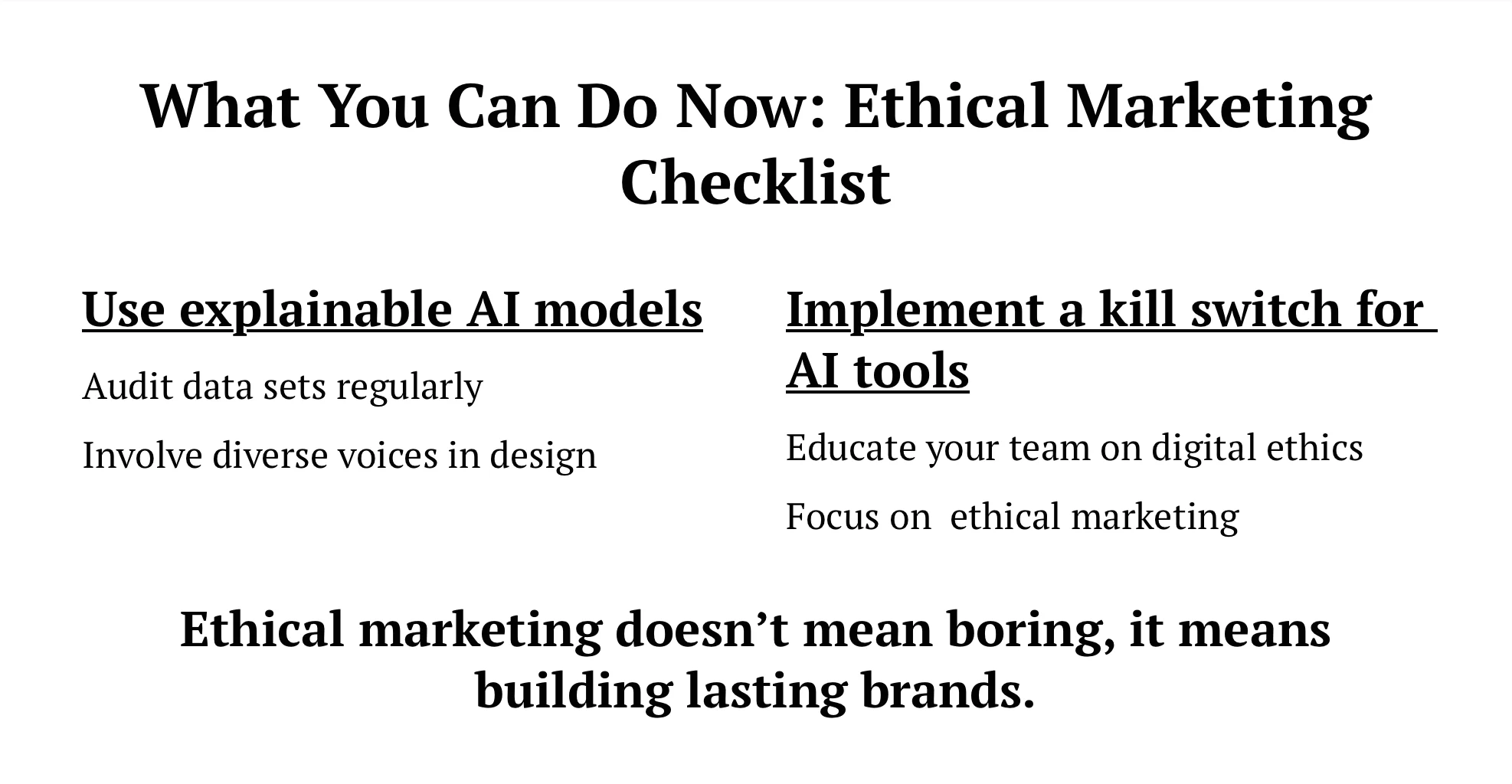
🔗 Let’s Take Action
👉 Need help building ethical campaigns? Let’s talk.
👉 Join our newsletter for future insights
👉 Explore our AI-powered marketing services
Thanks for reading.
If this hit home or got you thinking, please share it.
Let’s keep this conversation going. so glad you’re part of it. Stay tuned for more blogs and drop a comment below if you’d like to say something or a topic you’d like to see in a blog.